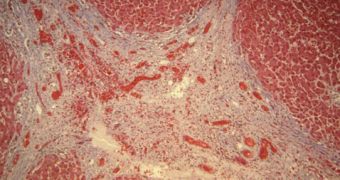Those suffering from liver disease, either as a result of hepatitis or due to alcohol abuse, might still stand a chance at making a recovery, thanks to a newly developed NADPH oxidase inhibitor which supposedly counteracts liver fibrosis, argues a study recently published in the journal 'Hepatology.'
The scientists who conducted this study claim that, by inhibiting NOX, the development of fibrosis can be halted, thus allowing the liver to heal itself and repair the scarring which has already occurred.
Newswise quotes David A. Brenner, MD and dean of the School of Medicine at the University of California, who supposedly argued that, “This new study provides important validation of the role of NOX in liver fibrosis, and suggests that a NOX inhibitor could provide an effective treatment for this devastating disease.”
Using funds provided by the US National Institutes of Health and by the American Liver Foundation, the specialists involved in this research tested a NOX1/4 inhibitor (the GKT137831) produced by Genkyotex SA – a Geneva-based company which specializes in small molecule therapeutics – on animal models (mice, to be more precise).
Thus, they found that said inhibitor was successful from various standpoints: it suppressed the production of ROS (i.e. reactive oxidative species, i.e. chemically reactive molecules which can cause aberrant tissue repair in the liver) and NOX, and it halted the expression of the fibrotic gene.
The same source reveals that Patrick Page from Genkyotex explained how, “These data highlight the excellent pharmacological properties of GKT137831 and the broad potential for its use in fibrotic diseases.”
Although for the time being human patients suffering from the aforementioned liver conditions cannot benefit from these findings, it is expected that a clinical trial will soon follow and, should things go as planned, a new liver drug could make it on the marketplace in the not so distant future.

 14 DAY TRIAL //
14 DAY TRIAL //